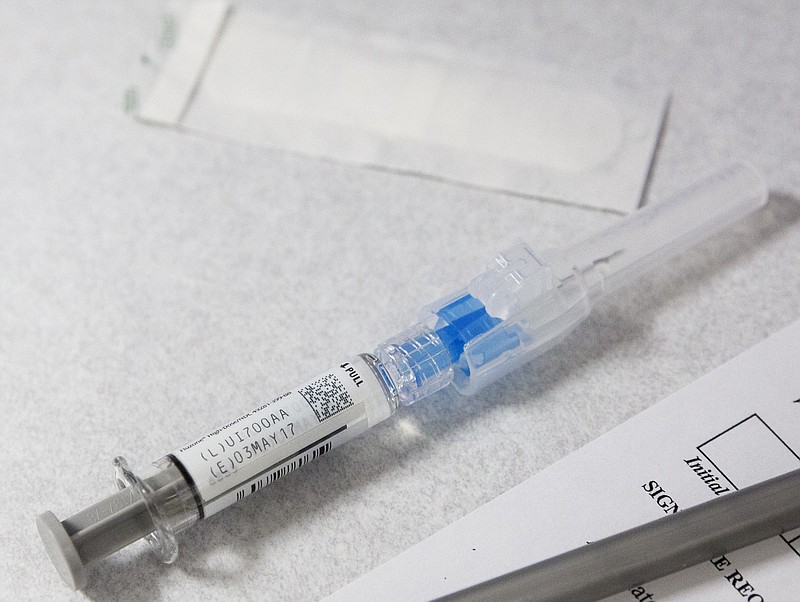(Second of two parts. Read part one here.)
A 1955 disaster in the production of polio vaccine undermined public confidence in vaccinations generally. The then-prevalent Salk vaccine relied upon killed viruses to establish immunity. Cutter Laboratory, a privately owned company, released a batch of vaccine that contained live virus. Of 200,000 children who received the Cutter vaccine, 40,000 developed polio. Two hundred children suffered varying degrees of paralysis, and 10 died. The man-made epidemic swung support to the oral vaccine, developed by Albert Sabin, which employed weakened, live virus.
Following this calamity, the federal government enacted tight regulations for the manufacture of all vaccines.
In the 1970s, concerns arose over possible nervous system complications following injections with the triple vaccine for diphtheria, pertussis and tetanus (DPT). Lawsuits followed with hefty awards that threatened to shut down manufacture of all vaccines in the U.S.
In 1986, Congress passed the National Vaccine Injury Compensation Program, a no-fault system for evaluating claims against vaccine makers. All cases are heard in the U.S. Court of Federal Claims. Compensation, when granted, covers medical and legal costs, projected loss of future earnings and up to $250,000 for pain and suffering. The program is funded by a tax on each dose of vaccine administered.
In recent years vigorous opposition has been directed against the measles, mumps, rubella vaccination (MMR). Two MMR injections in childhood confer lifelong immunity.
A 1998 paper in the British medical journal, The Lancet, claimed a link between the MMR and the development of autism. Senior author Andrew Wakefield and 12 co-authors contended that 12 children who were normal, developed symptoms consistent with autism after receiving MMR vaccine. The paper activated alarm bells worldwide; vaccination rates for MMR fell dramatically.
Subsequent analyses of the paper led 10 of the co-authors to disavow any connection to the paper and its research. In 2010, The Lancet issued a full retraction of the paper on ethical and scientific grounds.
Dr. Wakefield moved to the U.S. and is a vocal leader in the anti-vaccination movement. Books, a movie and websites proclaim the dangers.
Multiple peer-reviewed studies have failed to find a link between MMR vaccination and autism. In early March, Annals of Internal Medicine released a Danish study, which evaluated more than 650,000 children born to Danish-born mothers between the years 1999-2010. No link was found between MMR and autism. The American Academy of Pediatrics maintains its strong recommendation for MMR and a panel of other vaccinations.
With the decline in MMR vaccination rates, measles outbreaks have occurred around the world. The U.S. was almost measles-free in the early 2000s. A vaccination rate of 95 per cent or higher is required to prevent an outbreak of the highly contagious measles virus. A map of U.S. counties in the March 9 issue of The Economist highlights the number of counties where vaccination rates fall below the 95 percent threshold along with location of outbreaks in Washington, Texas, Illinois and New York. Most cases of measles in the U.S. have been imported from other countries, sometimes by American tourists returning from those areas.
Mumps outbreaks have also occurred with the decline in vaccination. The virus may attack testicles in adolescent and adult males, causing infertility.
Rubella causes a mild skin rash in children. The virus can have catastrophic effects upon fetuses, especially in the first trimester. Vaccine protective against rubella is included in childhood MMR for that reason.
Most states allow religious exemptions to all vaccination. Eighteen states permit exemptions based on personal, philosophical objections. Some opponents to vaccination contend that the long-term health of children benefits from infectious diseases that vaccines would otherwise block. Other opponents see a dark conspiracy of pharmaceutical companies behind recommendations for vaccinations.
Medical science in the U.S. is not a monolithic structure. Numerous medical scientists work in independent, academic medical centers, private foundations and companies, and for the National Institutes of Health, and the Centers for Disease Control and Prevention. Clinicians and public health staff base recommendations for vaccinations on national and international research published in peer-reviewed journals and presented at medical seminars. That ongoing process of research and evaluation assures the safety and effectiveness of vaccines.
Contact Clif Cleaveland at ccleaveland@timesfreepress.com.
